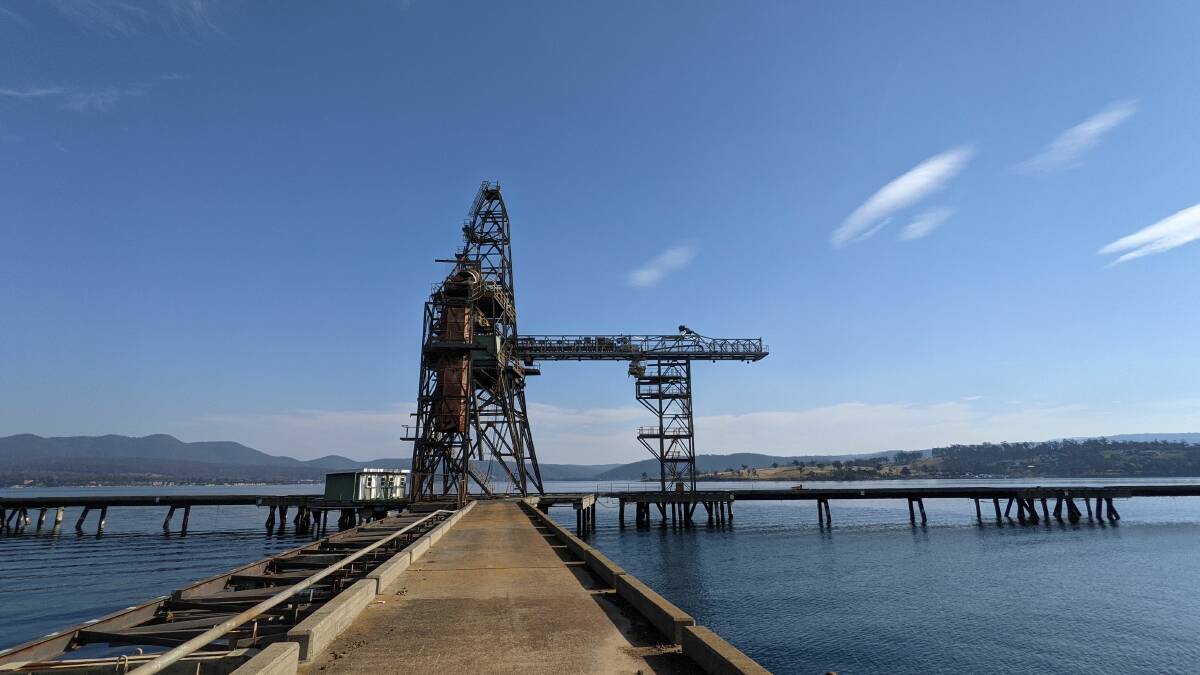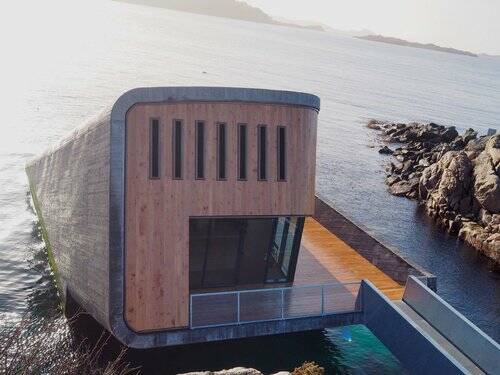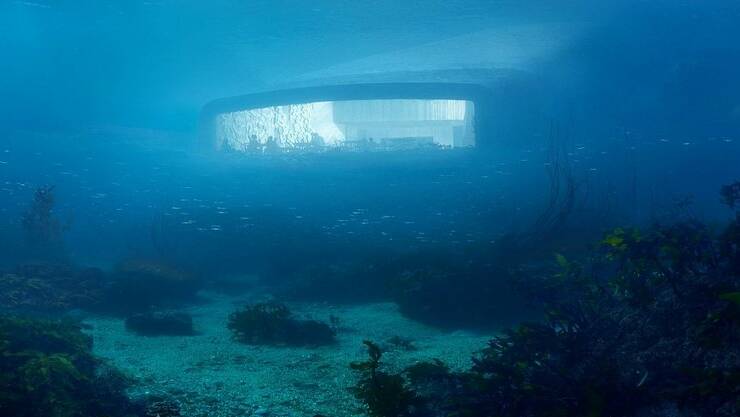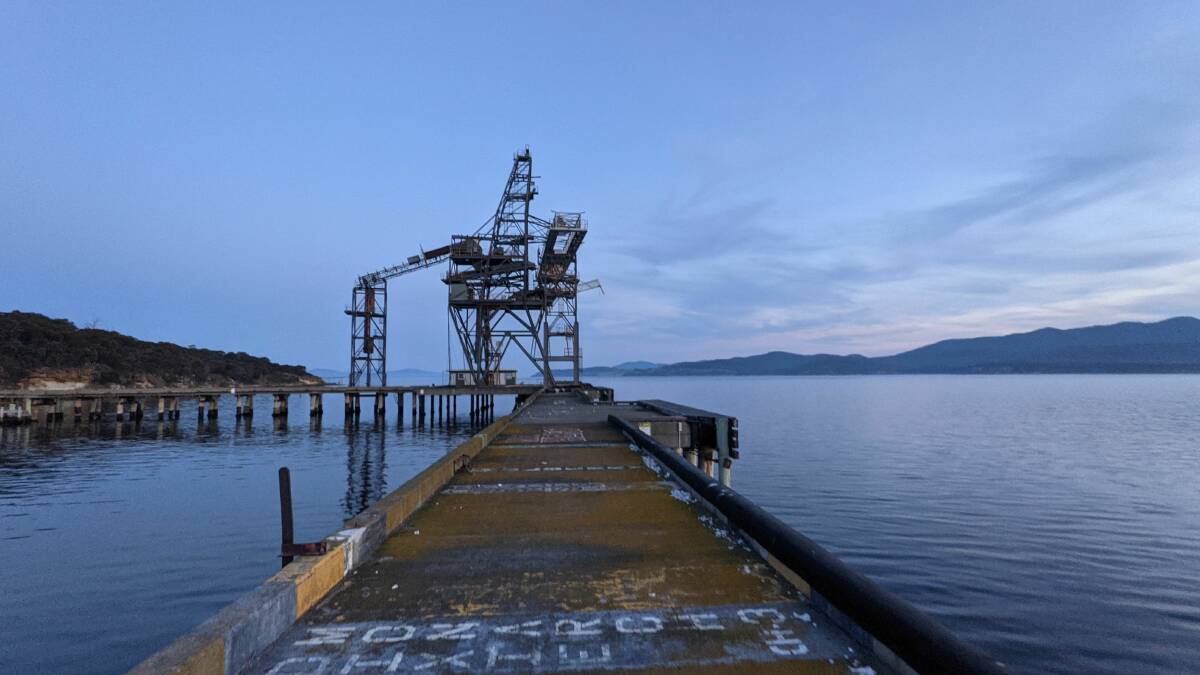Imagine an aquarium like-bubble, strands of Giant Kelp swaying in the underwater breeze and shoals of fish darting in the water as you wait for a glass of Tasmanian wine to be brought to your table.
Grand ideas are currently being floated for the old Gunns wood chip loader and wharf at Triabunna, which could see the industrial equipment be developed into Tasmania’s first underwater restaurant.
The wharf has sat idle for more than eleven years but its owners TAS Marine and SMC Marine and are now in serious discussions about how best to utilise the asset, and possibly transform it into an iconic piece of marine architecture.

Any transformation of the old wharf would combine marine architecture and engineering
Spring Bay Wharf and Marina project manager Annie Beaulieu said architectural firm Fender Katsalidis Architects, which designed David Walsh’s underground Museum of Old and New Art, has been engaged for the project, alongside local firm Room 11.
Ms Beaulieu said the master plan was in development, drawing inspiration from “Under”, an underwater restaurant in Norway, and “The Krane” in Denmark, which is a repurposed crane being used as a spa retreat.
She said all stakeholder and community discussion was welcome, with the sustainable project planned to benefit the entire region.

An outside glimpse of the underwater restaurant Under, in Norway. The restaurant is inspiration for Spring Bay Wharf developers
“We don’t know if we can build it yet but these are the inspirations that we are actively exploring, to see if they stack up, to see if they are feasible, if they are right for the region and right for the asset,” Ms Beaulieu said.
“It is such a big piece of clever engineering and an industrial icon to the region. We are looking into how we can leverage this past to build on the future,” she said.
“It would be a structure that could withstand the rough seas and beautiful storms that occur in Tasmania, and imagine being in that space, and experiencing those storms from inside a bubble, that would be pretty epic.”

The window of the underwater restaurant Under in Norway.
Ms Beaulieu said the owners were also extremely passionate about the marine environment, and hoped to use the structure to educate and raise awareness about the dying kelp forests of Tasmania, of which 95 per cent has already disappeared.
As part of its planning the company is exploring whether it would be possible to plant and restore kelp forests, which has included talks with IMAS ecology and biodiversity head Professor Craig Johnson.
“Giant Kelp forests were the first marine community put on the endangered species list. People don’t know that,” Ms Beaulieu said.

Annie Beaulieu
“There is a lot of focus on the Great Barrier Reef, it is a main image for Australia, but very little focus is on the Great Southern Reef, which Tassie is part of, so we would like to do something to include an underwater window or an observatory, whatever we end up doing, that could raise awareness about this marine environment,” she said.
“This is something that we would love to do, but there are many hurdles to get that going.”
Ms Beaulieu acknowledged that this would not be the only hurdle for their grand plans, with engineering possibilities and financial cost key considerations.
“From a marine construction point of view, to restore and old wharf like this would be extremely expensive, complex and risky, but the expertise that we have means we have the best possible chance to make this viable.
“TAS Marine and SMC Marine are respectively known in Australia and Tasmania as the most renowned reputable marine engineer and marine construction companies, so they de-risk this project.”
Ms Beaulieu said Under, the restaurant in Norway, was partly funded by the Norwegian government, and so the ultimate goal would be to secure government and other funding support.
She said another significant marine architectural project in Western Australia, a $30 million redevelopment of the Busselton Jetty, secured $13 million in government funding.

She added that Under was also engineered by Australian marine engineer Sean Van Steel, a University of Tasmania and Australian Maritime College graduate, who had recently moved back to Tasmania.
“We are a passionate multidisciplinary team of marine engineers, builders, restoration experts, sustainable tourism professionals, designers and ocean lovers,” she said.
“We are completely in love with the asset and we don’t want to see it go to waste.”
What do you think? Send us a letter to the editor:
Our journalists work hard to provide local, up-to-date news to the community. This is how you can continue to access our trusted content:










